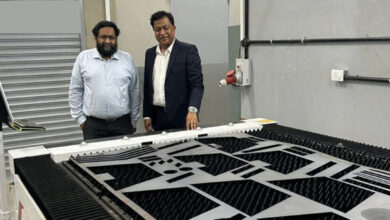Entrepreneurship as America’s Debt Solution – Inside Sources

With the $1.2 trillion spending bill passed and signed into law, many have expressed concern that the U.S. debt is reaching unprecedented levels, casting a shadow over the country’s economic future.
According to a recent nonpartisan Congressional Budget Office forecast, the federal government’s already record-high debt will balloon to an unprecedented $54 trillion by 2034. This alarming increase is attributed to an aging population, soaring federal healthcare costs, and the burden of higher interest rates. As of January, the U.S. debt surpassed $34 trillion, with rising interest rates exacerbating the government’s financial obligations.
This growing debt challenge demands a nuanced understanding and a dual approach: immediate, albeit politically unpopular, fixes; and long-term, sustainable solutions that transcend political cycles and prioritize future economic health.
In this critical juncture, entrepreneurship emerges as a beacon of hope, embodying the American spirit of innovation and resilience. By creating a thriving startup environment, we can generate a powerful economic engine that not only creates jobs but also stimulates broad-based tax revenue growth and helps to tackle the debt head-on.
According to the Kauffman Foundation, entrepreneurs create more than 1.5 million jobs annually in the United States. This level of job creation is crucial for expanding the tax base, considering the dynamic nature of the economy in which job turnover rates are high due to structural changes and technological progress.
Promoting innovation through tax incentives targeted at startups and small businesses investing in research and development, and simplifying regulatory processes can accelerate the creation of groundbreaking products and services. This strategy catalyzes broad economic growth and expands the tax base, creating a conducive environment for business development and expansion.
The NSF I-Corps program exemplifies how targeted support for entrepreneurship can translate scientific and technological innovation into market-ready solutions. This initiative bridges the gap between research and commercial viability, turning ideas into income-generating enterprises. The genius of programs like I-Corps lies in their ability to multiply the economic effects of federal research dollars. These spawning businesses drive job creation and enhance competitiveness.
However, I-Corps is just the beginning. A full commitment to nurturing the entrepreneurial ecosystem requires scaling such programs and ensuring entrepreneurs have access to essential resources like capital, mentorship and a favorable regulatory environment.
Addressing the national debt through entrepreneurship requires a broader vision — one that extends beyond Silicon Valley to include innovation hubs across the country. This nationwide strategy would leverage local strengths and unlock untapped potential, driving economic growth in diverse sectors ranging from renewable energy and healthcare to advanced manufacturing and digital services.
While some argue that focusing on entrepreneurship is a long-term solution to an immediate problem, the beauty of this approach lies in its dual effect. In the short term, supporting startups and small businesses can quickly boost economic activity and tax revenues. Over the longer term, fostering a culture of innovation lays the groundwork for sustained economic growth and resilience, ensuring that the United States remains globally competitive.
Streamlining the tax code to eliminate complexities and close loopholes is critical. Such reforms would ensure a fairer financial contribution from all sectors, particularly the wealthiest, thereby enhancing the government’s revenue collection and fiscal management capabilities. This, in turn, would help gradually reduce the national debt.
As we navigate the challenging road ahead, remember that America’s greatest asset is its spirit of innovation. Addressing the national debt necessitates shifting from myopic policies toward a vision that embraces long-term, strategic foresight. With a holistic approach that catalyzes entrepreneurship, streamlines the tax framework, and increases economic growth, America can chart a course out of its fiscal quagmire.



